“Modern glass boxes may peek through the soaring hedgerows of the Hamptons, but the houses that are inspired by the last two centuries still seem to have the most spirit for the families I work with,” shares highly coveted interior designer, Steven Gambrel, founder and president of S.R. Gambrel, Inc.. Gambrel draws inspiration from vernacular architectural details of the particular region of each commission, and his hallmark is properly proportioned structures and details, partnered always with a carefully curated collection of vintage, antique, and custom furniture which Gambrel designs.
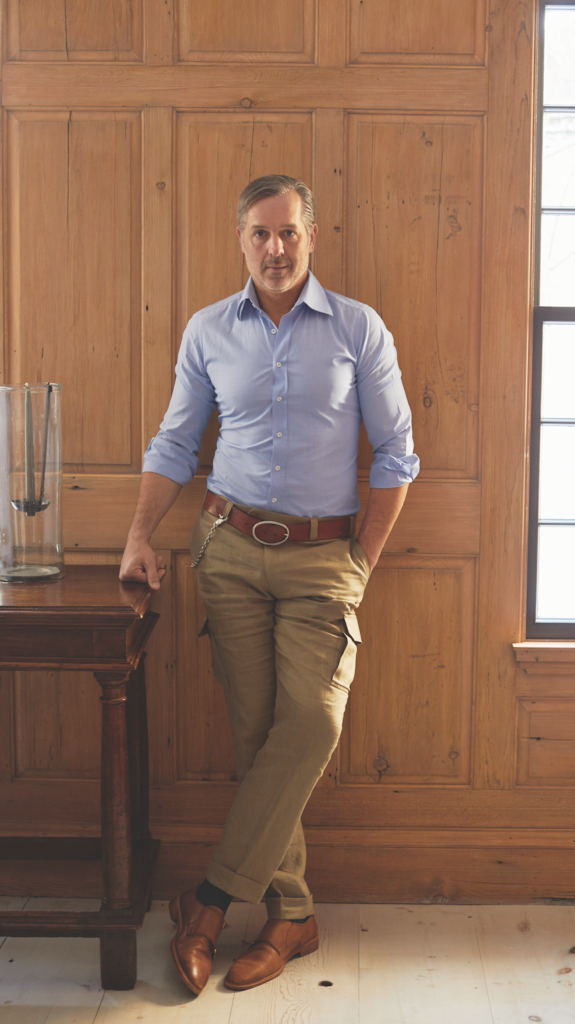

Although Steven’s projects in New York City, Aspen, Miami, Virginia, London, Zurich, Hong Kong, and beyond have won him a diverse and devoted clientele, one could argue that the Hamptons has a hold of his heart. “The Hamptons have always represented a place of American warmth and casualness; when I design in this region, it is often the textures and colors of nature that inspire me, and of course, beautiful 18th and 19th century architecture.” Gambrel spends much of his time in the historic old whaling village of Sag Harbor, where he resides in a pristinely restored 19th century waterfront home on an acre, facing west with a dock.
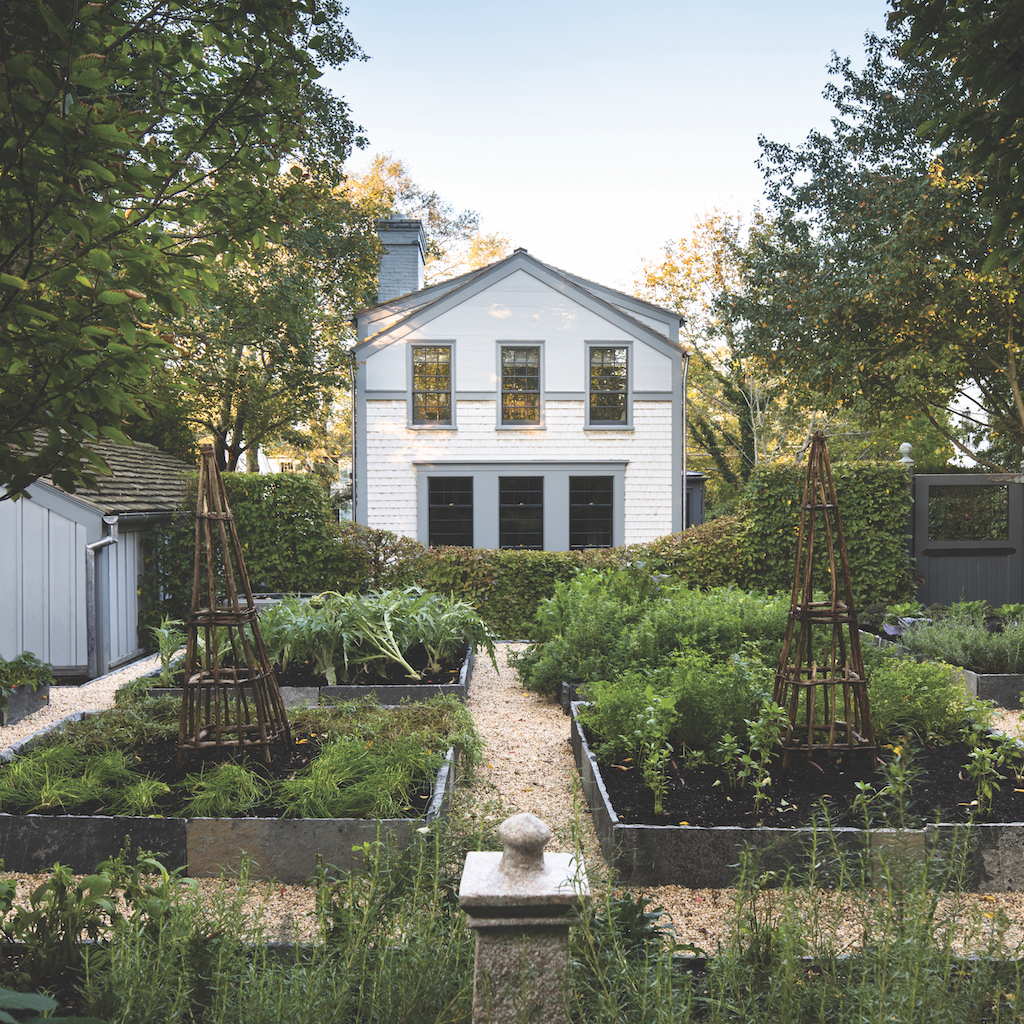

“I completely rebuilt and reimagined the home and now it has served us many years of casual fun.” Whether it’s dock to dish picnics on the sandy shore, a sunset boat cruise with friends to nearby Shelter Island, or dinner parties in his restored Stone Barn with the doors flung open facing the harbor, Gambrel GETS how to live your best Hamptons life, and that’s why his work is always in such demand here.
COMFORTABLE LUXURY
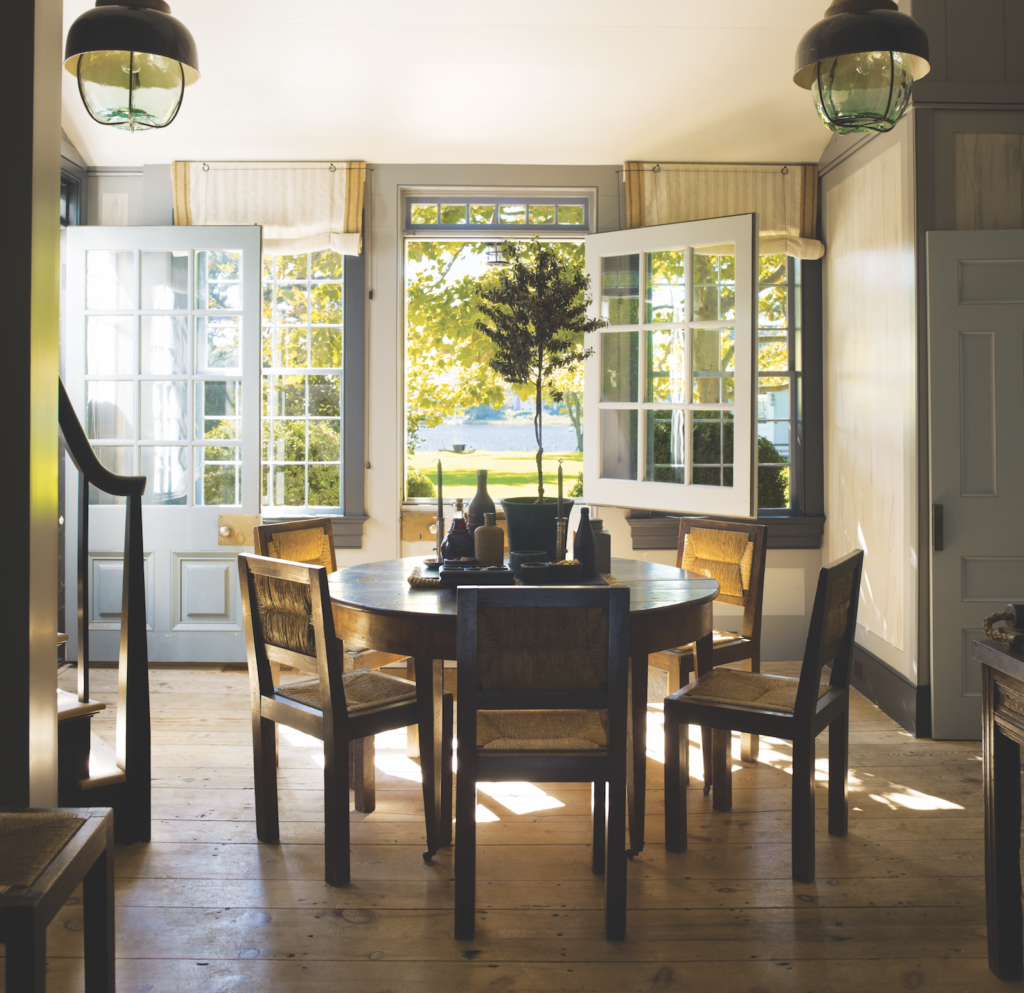

Whether designing a Southampton weekend beach retreat for high powered Manhattan clients, or a rambling Bridgehampton horse farm, Gambrel showcases his passion for timeless, comfortable homes that only improve with age. “My Hamptons clients consistently want a casual vibe and meandering volumes, but now with a lot more amenities to entertain growing family generations. They want people and family to naturally gravitate towards their home.”
“I think it’s an easier, more relaxed lifestyle in the Hamptons now, where you can have kids and dogs and bikes and surf boards and not have to worry about slick surfaces and glossy paint.” Which rooms are his key focus for luxe Hamptons living? “Amazing kitchens are a must,” says Gambrel. “Layered textures, thick stones, and reclaimed materials are found in most of my designs.” Exterior covered porches set for al fresco entertaining are also a key calling card for the lifestyle curator. “Outdoor rooms require the same efforts and somewhat the same costs as a properly furnished interior room, but that’s where we all want to be.”
BRINGING THE OUTSIDE IN
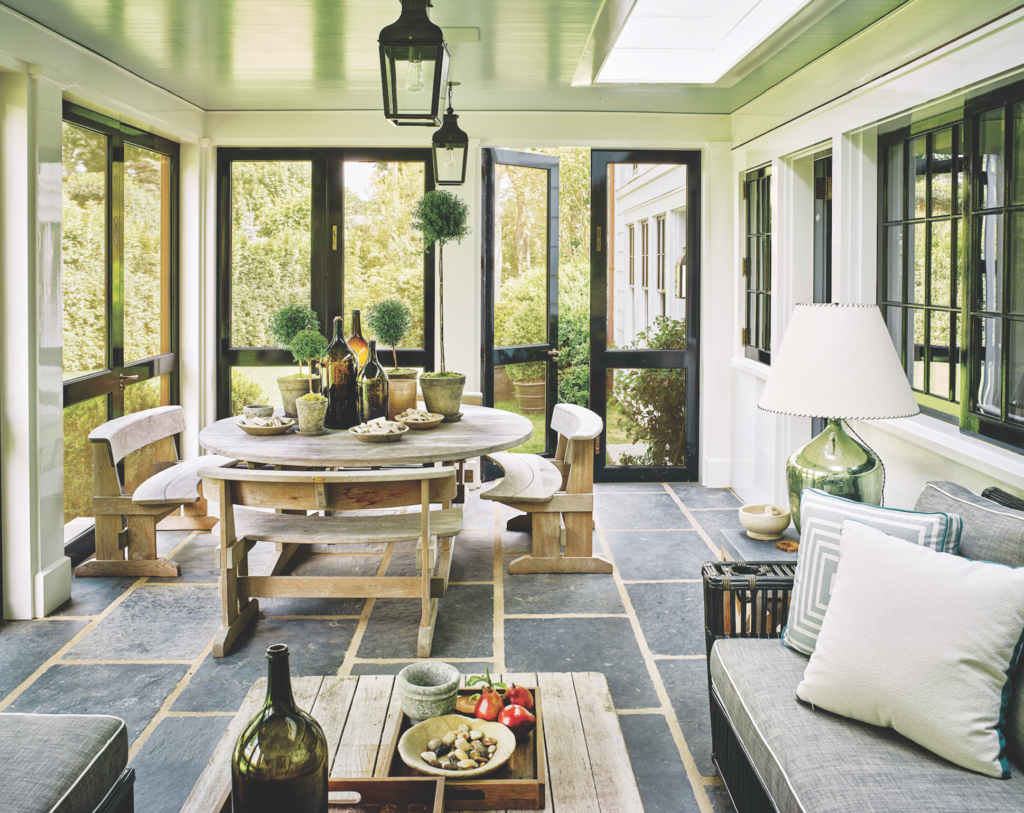

“Certainly the immediate views of the Hamptons are inspiration to me: the clear crisp light, the contrast of oyster shell into reeds, into silvery greens, into cool blue grey water, and soft clear sky.. The legendary reflected light of the “East End” gives a mercurial effect, a pale silvery grey I love to capture,” muses Gambrel.
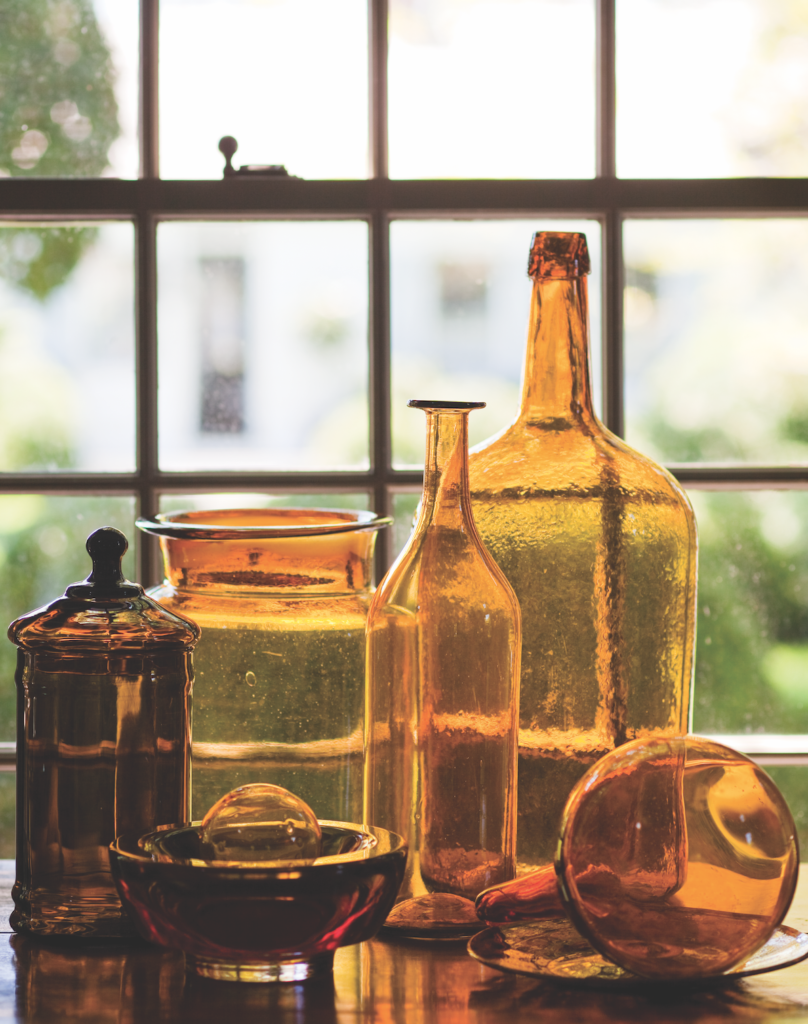

There is an endless natural color palette to draw from in the Hamptons; from the creamy shades of pebbles at Long Beach, to the deep ocean blues of the waves at Coopers Beach, or the golden hues of the sunset at Ditch Plains in Montauk. “The inspired textures of the landscape are easiest defined in my designs through hand knitted wool, white oaks and bleached grey wood, and Belgium linens with their nubby qualities and ease of use.”
BUILT TO LAST…AND TO SELL
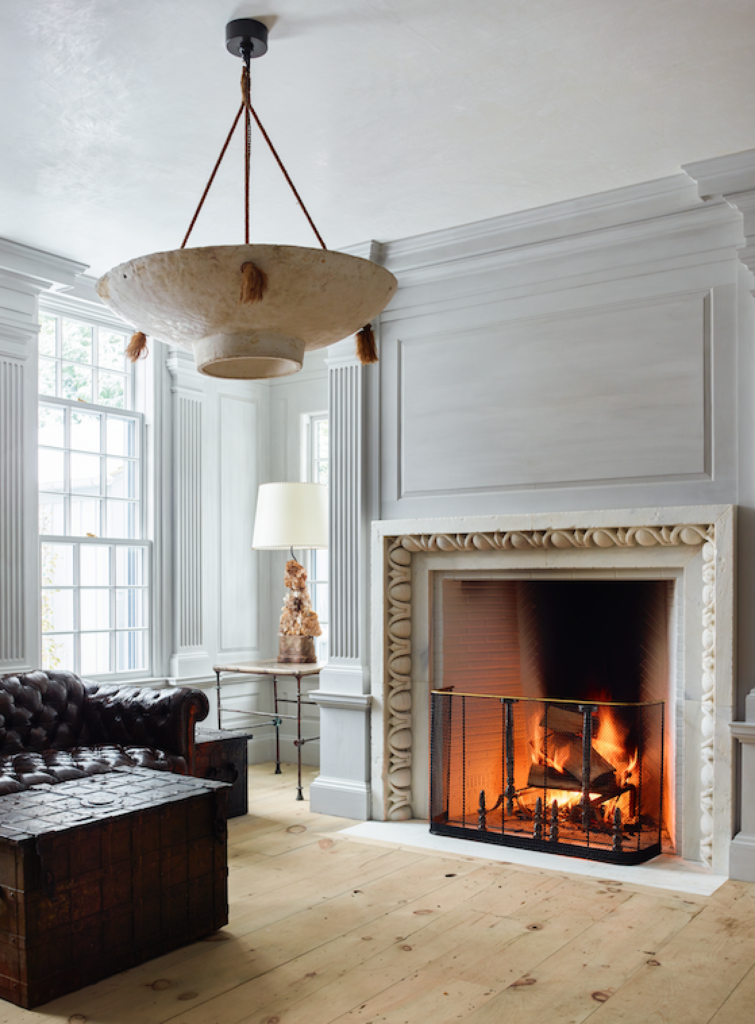

“I just finished my second restoration project that I built to sell in Sag Harbor; both projects were early 19th century houses in great need of reconstruction, and both were done with the utmost concern for super high quality and integrity.” Each meticulously restored home (and hefty list price) have left Hamptonites clamoring for a look, and for more just like it.
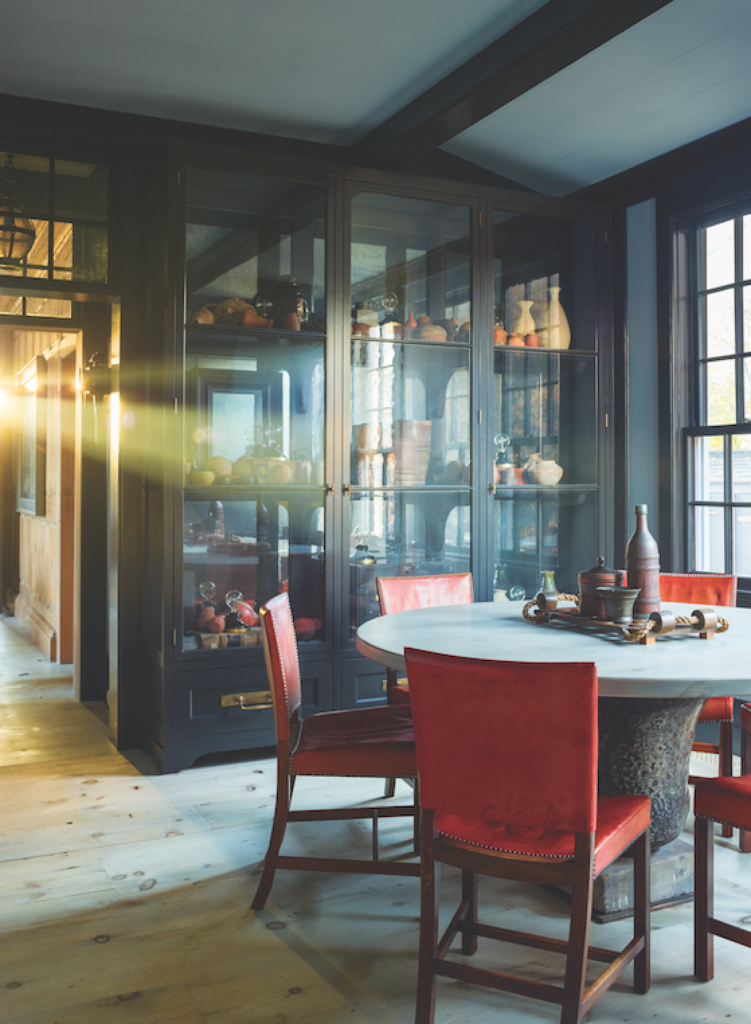

“I would rather spend more to build something I am proud of and hopefully inspire neighbors to go the extra mile to make great choices when restoring important village houses,” says Steven. “It adds to the uniformity of the village. I love to tackle an old preservation project, but I also love making something new too, as long as it is soulful, carefully proportioned, and references our deep storied past.”

